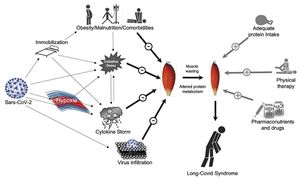Honda Motor Co. and Nissan Motor Co. have officially abandoned their talks for a proposed business alliance, which aimed at merging their operations. The decision, announced on February 5, 2023, came just over a month after the two companies began discussing their integration back in December 2022. The sudden dissolution of the talks has sent ripples through the automotive industry, many of whom had viewed this merger as potentially transformative for both companies.
Initially, the alliance was projected to lead to the formation of a new holding company, with both Honda and Nissan operating under this umbrella. The discussions aimed to capitalize on the growing importance of electric vehicles, with both companies recognizing the need to innovate and streamline operations to stay competitive. Industry experts had reasoned the merger would offer necessary synergies for both companies, especially as they navigate through the challenges of reduced sales and shrinking profits.
Despite the promising forecasts, the reality turned out to be more complicated. Nissan faced severe operational hurdles, including declining sales figures, particularly notable within its North American markets. To mitigate these financial pressures, the company announced plans to reduce its global production capacity by 20% and implement workforce reductions, impacting around 9,000 employees across various operations.
During the negotiation period, Honda proposed acquiring Nissan as a subsidiary, but this move was met with strong resistance from Nissan's management. According to internal sources, there was widespread opposition to the idea of becoming Honda's subsidiary, with comments reflecting sentiments like, "We cannot accept becoming a subsidiary." This fierce internal backlash made it increasingly clear to both parties the merger might not be feasible.
According to Bloomberg, sources close to the negotiations gave insight on the turbulence within Nissan, stating, "Although the discussions were aimed at creating synergies, the differences became too entrenched to overcome." This discord not only derailed the negotiation but also highlighted significant differences in corporate strategy between the two automotive giants.
The cessation of talks also casts doubt on the broader viability of other potential collaborations. Both companies have hinted at continuing their partnership on certain technological initiatives, including autonomous driving and software upgrades for next-gen vehicles. Nonetheless, the failure of the merger raises concerns about each company's future prospects, especially if they remain focused on independent trajectories.
Experts have voiced their mixed feelings about the alliance's dissolution. Atsushi Nagauchi, a professor at Waseda University, noted, "Integration was seen as beneficial due to the growing presence of electric vehicles," underscoring how the automotive industry is increasingly focused on adaptation and technological advancement. There were fears, though, about the risk of operating as "mid-tier" car manufacturers if they did not merge to remain competitive on the global stage. Nagauchi cautioned against the dangers of becoming obsolete, especially as larger competitors consolidate resources.
The automotive market is witnessing sweeping technological shifts, and as Honda and Nissan forge independent paths, the ability to innovate and adapt will be put to the test. This incident serves as a stark reminder of the challenges inherent not only within these companies but across the entire automotive industry as firms rush to pivot to electric offerings and sustainable practices.
Looking forward, Honda and Nissan must each develop strategies to overcome the financial challenges they face, now without the intended support of the merger. For Nissan, reevaluations of their market operations, particularly strategies to boost sales in North America and China, will be imperative. For Honda, pursuing its own innovations will remain central to its ability to thrive amid fierce competition.
While the proposed business alliance has officially been dissolved, the automotive world watches closely to see what follows next for these historic manufacturers. The failed merger emphasizes the growing complexity and tension within the industry, reflecting broader trends of consolidation and cooperation, as companies either sink or swim on their own.



